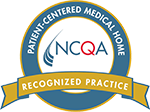Understanding the Difference Between RSV and COVID-19
We are all on heightened alert amid the outbreak of the delta variant of COVID-19. Cases are on the rise, and while those who have been vaccinated are less likely to result in severe illness and hospitalization, parents are more cautious – and wisely so—especially parents of children not yet able to receive the vaccine.
At Rainbow Pediatrics, we see many sick kids, and some of them have an illness similar yet very different from COVID. The illness we are referring to is Respiratory Syncytial Virus or RSV. And while we see many cases of RSV each year, the similarities between COVID and RSV can make even the most experienced parent wonder and worry. Therefore, we wanted to shed some light to help you understand the differences and similarities between the two illnesses.
To begin, both RSV and COVID-19 are highly contagious respiratory infections. Both can cause symptoms such as a runny nose, fever, and cough. However, young children and babies with COVID usually have mild symptoms. On the other hand, with RSV, symptoms are often more noticeable such as trouble breathing, appetite loss, sneezing, and moodiness.
What Does RSV Look Like in Kids?
Anyone can develop RSV; however, children born prematurely and those with immunodeficiencies, heart disease, or lung disease are at the highest risk. The virus is passed through respiratory droplets. A person with RSV is typically contagious for up to eight days after being infected. The good news is that once you have had RSV, your body develops antibodies to help protect against future infections.
Since RSV can quickly worsen, parents and caregivers need to look for signs of worsening symptoms. The most significant things to watch for include difficulty breathing, which may be seen as the chest pulling in when inhaling or short, quick breaths, fatigue, irritability, fever, and a bluish tinge to the skin – especially the lips and nail beds. If you notice any of these symptoms, a visit to the pediatrician or emergency room is essential.
What Does COVID-19 Look Like in Kids?
Kids are less likely to experience severe symptoms if they have COVID-19. The vast majority of children who get sick (90%) have mild to moderate cold-like symptoms. These symptoms include fever, runny nose, cough, vomiting, and diarrhea.
Going Forward – What Parents and Caregivers Can Do
According to the American Academy of Pediatrics, children still make up 12-15% of COVID cases and about 3% of all hospitalizations – with the delta variant. For the most part, the children who are hospitalized were not vaccinated. This raises a key concern among families as they return to school – especially for those who have kids not yet able to receive the vaccine. The recommendations for minimizing the spread include increased masking, distancing, and hand washing. Once the vaccine is available, eligible children should receive it. The vaccine has proven to be highly effective at preventing severe cases of COVID, including hospitalization and death.
Experts anticipate that vaccine approval for kids under 12 will come towards the latter part of this winter or early spring next year. While many of you were hoping your child would receive the vaccine sooner, it is crucial to stay vigilant and protect them. Remember, while most children may not get seriously ill, they can spread COVID to people who can.
If you have concerns that your child may have RSV or COVID, please contact our office to schedule an appointment.







